Country guides

Things to do in Morocco
Steeped in history, spanning miles of Mediterranean and Atlantic coastline, and boasting exciting attractions, Morocco is a sightseer's paradise. Part of the appeal is the inviting climate but there is so much more to this diverse and historically rich country than meets the eye. Within the enchanting medieval medinas of Fez and Marrakech, where snake charmers blow their hypnotic melodies amid the smell of the tanners' yards, and the hustle and bustle of the open-air markets, the fascinating and exotic soul of Morocco can really be glimpsed. With Phoenician, Hellenic, Carthaginian and Roman civilisations all having passed through Morocco, it's also worth revelling in the immensity of the country's past by exploring its countless museums, palaces, mosques, tombs and ruins.
Adventurous travellers can also head south to wander the hot desert sands of the Western Sahara, and see breathtaking landscapes that are a privilege to behold. Or for a completely unexpected holiday experience, visitors could head deep into the High Atlas Mountains for a skiing holiday. There are exciting 4x4, horseback and camelback treks to enjoy as well as lovely coastlines to see.
Many of the sights around the cities are best traversed on foot, but for those planning on crisscrossing the country, trunk-line trains run through the heart of Morocco, connecting over one hundred stations spread out over 1,184 miles (1,907km) of track. Bus travel is also a popular mode of transport.
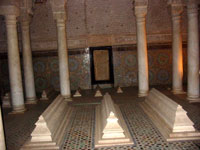
Saadian Tombs
The beautiful necropolis was built by the Saadian Sultan Ahmed el Mansour in the late 16th century as a final resting place for him and his successors. Having fallen into disrepair…
Saadian Tombs
The beautiful necropolis was built by the Saadian Sultan Ahmed el Mansour in the late 16th century as a final resting place for him and his successors. Having fallen into disrepair, the tombs were rediscovered in 1917 and carefully restored to their former splendour. There are 66 indoor tombs, lavishly decorated with colourful, intricate mosaics. The central mausoleum, the Hall of the Twelve Columns, is exceptionally ornate with a high, vaulted roof, furnished with stunning carved cedar panels and columns of grey Italian marble. The tombs are spread through three rooms and there are gardens outside the building where the graves of soldiers and servants can be seen.
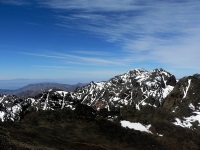
Oukaimeden
Thick snow envelops the Jebal Oukaimeden mountain peak during the winter months (usually January and February), and the desert ski resort is just a 46 mile (74km) drive from Marrak…
Oukaimeden
Thick snow envelops the Jebal Oukaimeden mountain peak during the winter months (usually January and February), and the desert ski resort is just a 46 mile (74km) drive from Marrakech. The town of Oukaimeden, which can be reached by taxi or car, is well-equipped with the basics for skiers, with restaurants, ski equipment to rent, comfortable hotels set in lush greenery and backed by blue mountains, as well as ski schools for beginners. Skiers can ascend the mountain by donkey or camel, but there are also some modern ski lifts. Five ski runs traverse down from the dizzying heights of Jebel Attar and there are nursery slopes and some intermediate runs.
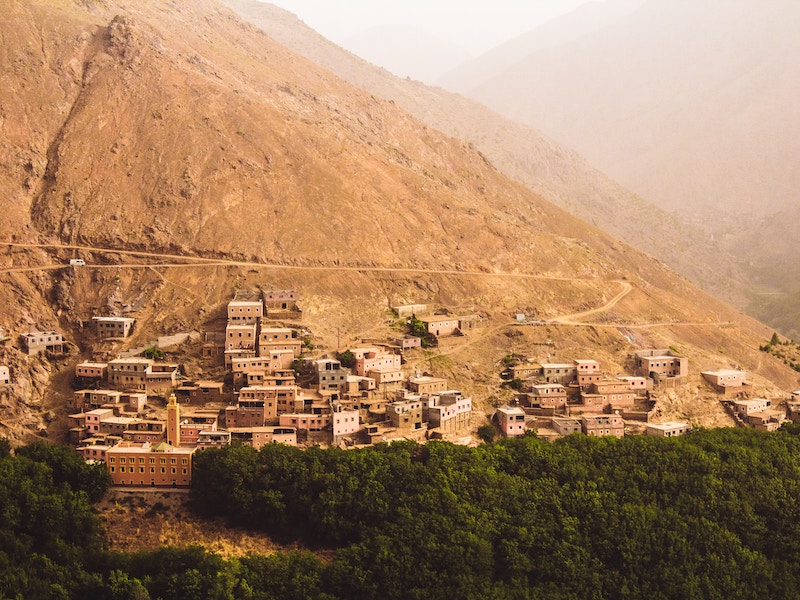
Ouirgane
The village of Ouirgane, in the foothills of the Atlas Mountains, about 90 minutes' drive from Marrakech, stands at the centre of a popular resort area, where summers are cooler an…
Ouirgane
The village of Ouirgane, in the foothills of the Atlas Mountains, about 90 minutes' drive from Marrakech, stands at the centre of a popular resort area, where summers are cooler and winters less harsh than those experienced in the city. The surrounding Berber countryside offers picturesque villages and hamlets to explore, set in pine forests full of wildlife and groves of fruit trees, alongside streams cascading down from the High Atlas Mountains and fields of wild flowers. The soil is a striking red, which emphasises the luxuriant greenery and makes the landscapes slightly otherworldly in some lights. The area is also known for its extraordinarily beautiful rose gardens.
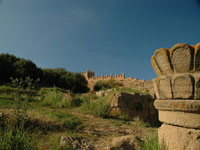
The Citadel of Chellah
Emerging from the boulevards of the Ville Nouvelle (New Town) of Rabat, travellers will come across the ruins of Chellah. Once the thriving walled Roman port city of Sala Colonia, …
The Citadel of Chellah
Emerging from the boulevards of the Ville Nouvelle (New Town) of Rabat, travellers will come across the ruins of Chellah. Once the thriving walled Roman port city of Sala Colonia, it was abandoned in 1154 in favour of Sale across the river mouth. In the time of the Almohads the site was used as a royal burial ground and, following this, the Merenid sultan, Abou El Hassan, added some monuments and the striking main gate in the mid-14th century. Just inside the gate are Roman ruins dating from 200 BC, which include a forum, a temple and a craftsmen's quarter. The citadel is now part of a garden, and in spring the ruins are surrounded by a beautiful variety of flowers.
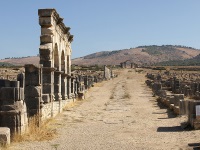
Volubilis
Volubilis lies near the Moroccan town of Meknes and is situated between Rabat and Fez. Historically it was a central Roman administrative city in Africa from around the third centu…
Volubilis
Volubilis lies near the Moroccan town of Meknes and is situated between Rabat and Fez. Historically it was a central Roman administrative city in Africa from around the third century BC, and was built atop a previous Carthaginian city. Volubilis was unique in that it was not abandoned after the Romans lost North Africa to the Arabs, with even the Latin language living on in the area for several centuries. Volubilis remained inhabited until the 18th century, when it was demolished to provide building materials for the palaces of Moulay Ismail in nearby Meknes, which meant that a great deal of the Roman architectural heritage was lost. Today the ruins are a UNESCO World Heritage Site and consist of some well-preserved columns, a basilica, a triumphal arch and about 30 magnificent mosaics.
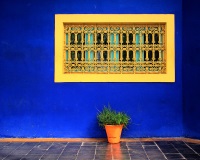
Majorelle Garden
The Majorelle Garden is a botanical garden designed by the French artist, Jacques Majorelle, in 1924. Previous owners have included Pierre Berge and Yves Saint-Laurent (whose ashes…
Majorelle Garden
The Majorelle Garden is a botanical garden designed by the French artist, Jacques Majorelle, in 1924. Previous owners have included Pierre Berge and Yves Saint-Laurent (whose ashes were scattered there when he died in 2008). The garden is also home to the Islamic Art Museum of Marrakech, which houses an exhibit of North African textiles from Saint-Laurent's personal collection, and paintings by Majorelle. The garden is home to more than 15 bird species endemic to North Africa, and full of ponds and water features. The garden took 40 years to create. It is one of the most popular tourist sites in Morocco and a must for all visitors.
Website www.jardinmajorelle.com
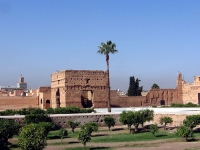
El Badi Palace
The El Badi Palace ('the incomparable palace') consists of the remnants of a glorious palace built by the Saadian King, Ahmad al-Mansur, in 1578. The original building is thought t…
El Badi Palace
The El Badi Palace ('the incomparable palace') consists of the remnants of a glorious palace built by the Saadian King, Ahmad al-Mansur, in 1578. The original building is thought to have had about 360 rooms, a courtyard and a pool, and was decorated with Italian marble and large amounts of Sudanese gold. It also had a small, underground jail where the king kept his prisoners. The design of the palace was influenced by Granada's Alhambra, but the original palace was torn apart by Sultan Mawlay Ismail. Today, the once luxurious palace is a ruin consisting of some intact rooms and numerous walls, terraces, gardens and foundations. The underground jail can still be explored and a number of beautiful mosaics survive.
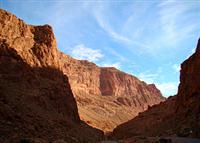
Todra Gorge
The Todra Gorge, a canyon on the eastern side of the High Atlas Mountains, is undoubtedly one of the most spectacular natural attractions that Morocco has to offer. Nature lovers w…
Todra Gorge
The Todra Gorge, a canyon on the eastern side of the High Atlas Mountains, is undoubtedly one of the most spectacular natural attractions that Morocco has to offer. Nature lovers who feel starved in the choked streets of Morocco's cities can simply take the trip to the Todra Gorge (most easily accessed from the town of Tinerhir) where they will be rewarded with the experience of a lifetime. To put the grandeur of the gorge into perspective, travellers should consider that over its final 1,950 feet (600m), the canyon narrows to a rocky passage only 33 feet (10m) wide, while the sheer walls rise up 984 feet (300m) on either side.
Ait Benhaddou
Ait Benhaddou is an ancient fortified city (ksar) situated along the former caravan route between the Sahara and Marrakech. It is certainly one of the most breathtaking tourist att…
Ait Benhaddou
Ait Benhaddou is an ancient fortified city (ksar) situated along the former caravan route between the Sahara and Marrakech. It is certainly one of the most breathtaking tourist attractions in Morocco. A UNESCO World Heritage Site, Ait Benhaddou is not only a place of great historical significance that stands as a record of Maghreb architectural practices, but is so immediately evocative of the most romantic visions of ancient Arabia that visitors may mistake it for a fanciful mirage. The buildings are constructed against a mountain and surrounded by steep defensive walls, and are all built from moulded earth and clay brick.
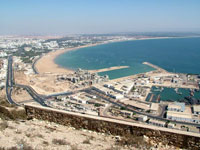
Agadir
The holiday destination of Agadir, south of Marrakech, is contemporary and fresh, and is fast developing into Morocco's major resort town. Agadier was rebuilt as an important seapo…
Agadir
The holiday destination of Agadir, south of Marrakech, is contemporary and fresh, and is fast developing into Morocco's major resort town. Agadier was rebuilt as an important seaport and centre for caravans traversing the Sahara after an earthquake wiped out most of its historic heritage in 1960. The rebuilt city has been modelled as a tourist destination and fishing port, favoured by package tours, particularly as a starting point for excursions into the Western Sahara to the south. Agadir has a lovely promenade along the coast and a vibrant restaurant and cafe culture tailored towards tourists. The nightlife is also fast developing and the shopping scene shouldn't disappoint.


